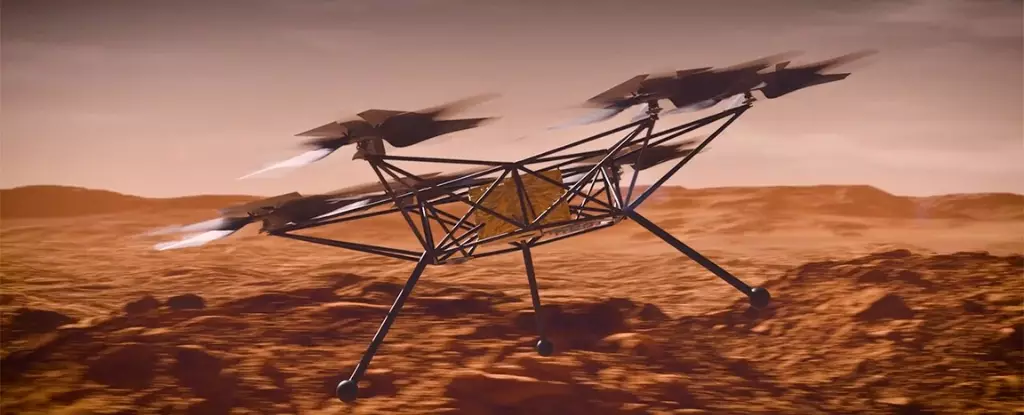In April 2021, NASA achieved a historic milestone with its Ingenuity helicopter, marking the first time powered flight occurred on another planet. Launched as part of the Perseverance rover mission in 2020, Ingenuity was primarily a technology demonstration designed to confirm that aerial vehicles could navigate the harsh, thin atmosphere of Mars. Its inaugural flight, reaching only 10 feet in altitude, was a monumental step in extraterrestrial exploration, proving that powered flight wasn’t just a theoretical possibility but a practical reality on the Red Planet.
Following Ingenuity’s success, NASA has unveiled a computer-generated concept for its next-generation aerial vehicle, humorously dubbed the “Mars Chopper.” This new craft aims to build upon the foundational principles laid by Ingenuity while expanding its operational capabilities, thus potentially revolutionizing how we explore Mars and similar celestial bodies.
The Martian environment poses numerous challenges for aerial vehicles. One major hurdle is the atmospheric density, which is less than 1% of that on Earth. This means that any craft navigating Mars must generate a significant amount of lift, especially when compared to their terrestrial counterparts. For engineers and scientists, this necessitates innovative designs and powerful rotors to propel these machines skyward.
In addition to the low density of the atmosphere, Mars presents other unique challenges such as pervasive fine dust, which can disrupt and damage delicate machinery. These factors underscore the need for robust engineering solutions capable of withstanding not only the harsh atmospheric conditions but also the abrasive properties of Martian dust. The Ingenuity helicopter has already proven its resilience in this context, successfully completing over 60 flights, each contributing valuable data for future missions.
NASA’s Mars Chopper is envisioned as a substantial advancement over Ingenuity, both in size and capability. Preliminary designs depict a vehicle approximately the size of an SUV, equipped with six rotors, each having six blades—smaller than those of its predecessor, yet engineered for enhanced lift. This increased capacity allows the Chopper to carry scientific instruments weighing up to 5 kilograms over distances of nearly 3 kilometers.
Collaboration between NASA’s Jet Propulsion Laboratory in Southern California and the Ames Research Center is fostering the development of this new aerial platform. The Chopper’s design not only emphasizes increased payload capacity but also suggests ambitious future missions that could include advanced imaging, terrain analysis, and scouting tasks that support ongoing Mars exploration missions.
The potential for the Mars Chopper to transform exploration strategies is immense. Aerial reconnaissance can vastly enhance the effectiveness of ground-based operations, providing high-resolution mapping data and scouting opportunities in hard-to-reach areas. In scenarios where rovers may be hindered by challenging terrain, the Chopper could glide above obstacles and gather crucial information, paving the way for more informed decision-making regarding land exploration priorities.
Moreover, as plans for human missions to Mars come closer to reality, the demand for efficient support systems becomes critical. Here, the innovative design of the Chopper could serve as a vital asset for human exploration, capable of scouting for safe landing zones or conducting assessments of local resources and conditions. The insights gained from aerial surveys can provide vital information for astronauts, optimizing their safety and efficacy during missions.
While the Mars Chopper is designed with the Red Planet in mind, its implications extend far beyond. This next-generation aerial vehicle represents a turning point for exploration across various extraterrestrial worlds with solid surfaces and sufficient atmospheres to support powered flight. As technology evolves, the strategies employed in these missions could shift significantly, allowing for a deeper understanding of our solar system and beyond.
With the groundwork laid by Ingenuity’s success and the promising conceptualization of the Mars Chopper, our celestial neighbors are poised to reveal secrets that have long eluded humanity. As we stand at the forefront of this new era of exploration, one can only imagine the possibilities that lie ahead in our quest to explore, discover, and understand the universe.



Leave a Reply